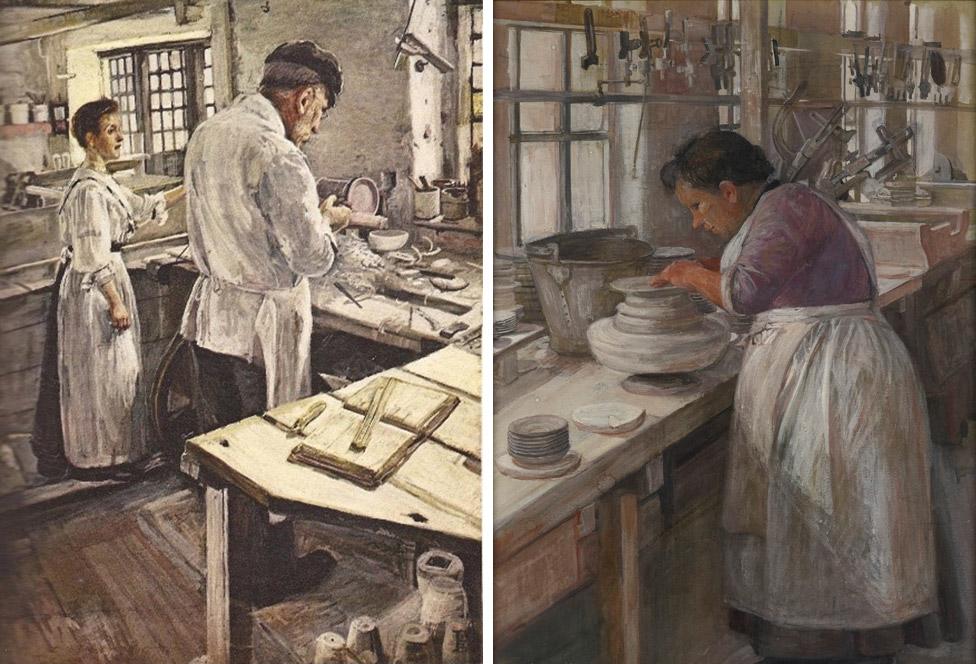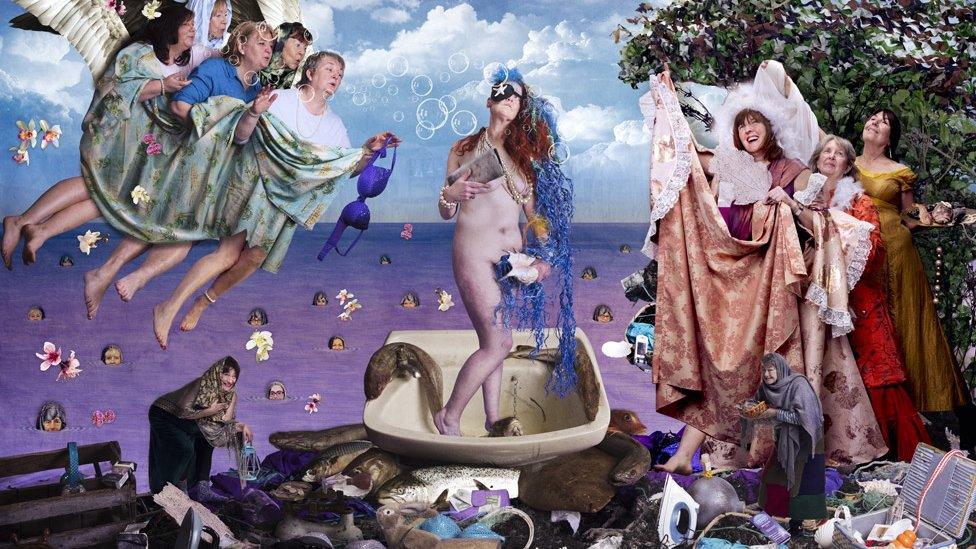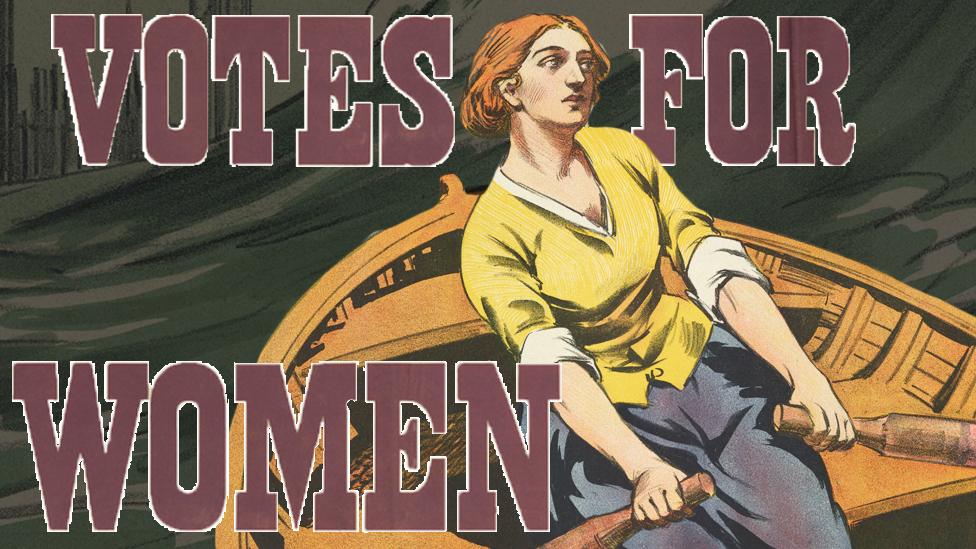Sylvia Pankhurst's paintings of working women bought by Tate
- Published

L: In a Glasgow Cotton Mill Minding a Pair of Fine Frames. R: In a Glasgow Cotton Spinning Mill Changing the Bobbin
Four portraits painted by suffragette leader Sylvia Pankhurst depicting women working in mills and potteries are to enter the UK's national art collection.
Pankhurst painted the watercolours in Glasgow and Staffordshire in 1907, when she documented the poor conditions and low wages experienced by women.
They have been bought by the Tate, which holds the national collection.
Tate's Ann Gallagher said they would "expand the way we represent working women as subjects in art history".
The paintings have been acquired to mark the centenary of some women getting the vote.
Along with her mother Emmeline and sister Christabel, Sylvia Pankhurst was among the leading voices in the campaign for women's suffrage.

L: An Old-fashioned Pottery Turning Jasper-ware. R: On a Pot Bank: Finishing Off the Edges of the Unbaked Plates on a Whirler
Sylvia was a skilled artist and painted some of the people she met when she visited industrial areas in the Midlands, northern England and Scotland in 1907.
Her paintings and written accounts were later published in the London Magazine and Votes for Women, the journal of the Women's Social and Political Union.
Two were painted in cotton mills in Glasgow, where she wrote about "the almost deafening noise of the machinery and the oppressive heat", which was "so hot and airless that I fainted within an hour".
The other two were created in the Potteries, where she was horrified to find that women were often restricted to low-skilled, low-paid roles assisting male workers.
She wrote: "Each was employed by the man she toiled for - the slave of a slave, I thought!"

Sylvia Pankhurst also put her artistic skills to use in the suffrage campaign
She hoped the images would help improve conditions for women, but later gave up art to dedicate herself to the suffrage campaign.
Ann Gallagher, Tate's director of collection for British art, said: "At a time when gender pay gaps and women's rights at work remain urgent topical issues, these images remind us of the role art can play in inspiring social change."
The paintings have been bought from the suffragette's grandchildren Helen and Alula Pankhurst. They can be seen at Scarborough Art Gallery until 6 January and will be exhibited at Tate Britain in 2020.
Tate holds the national collection of British art from 1500 to the present day.

Follow us on Facebook, external, on Twitter @BBCNewsEnts, external, or on Instagram at bbcnewsents, external. If you have a story suggestion email entertainment.news@bbc.co.uk, external.
- Published18 December 2018

- Published10 November 2018

- Published18 June 2016

- Published9 June 2018

- Published2 February 2018
